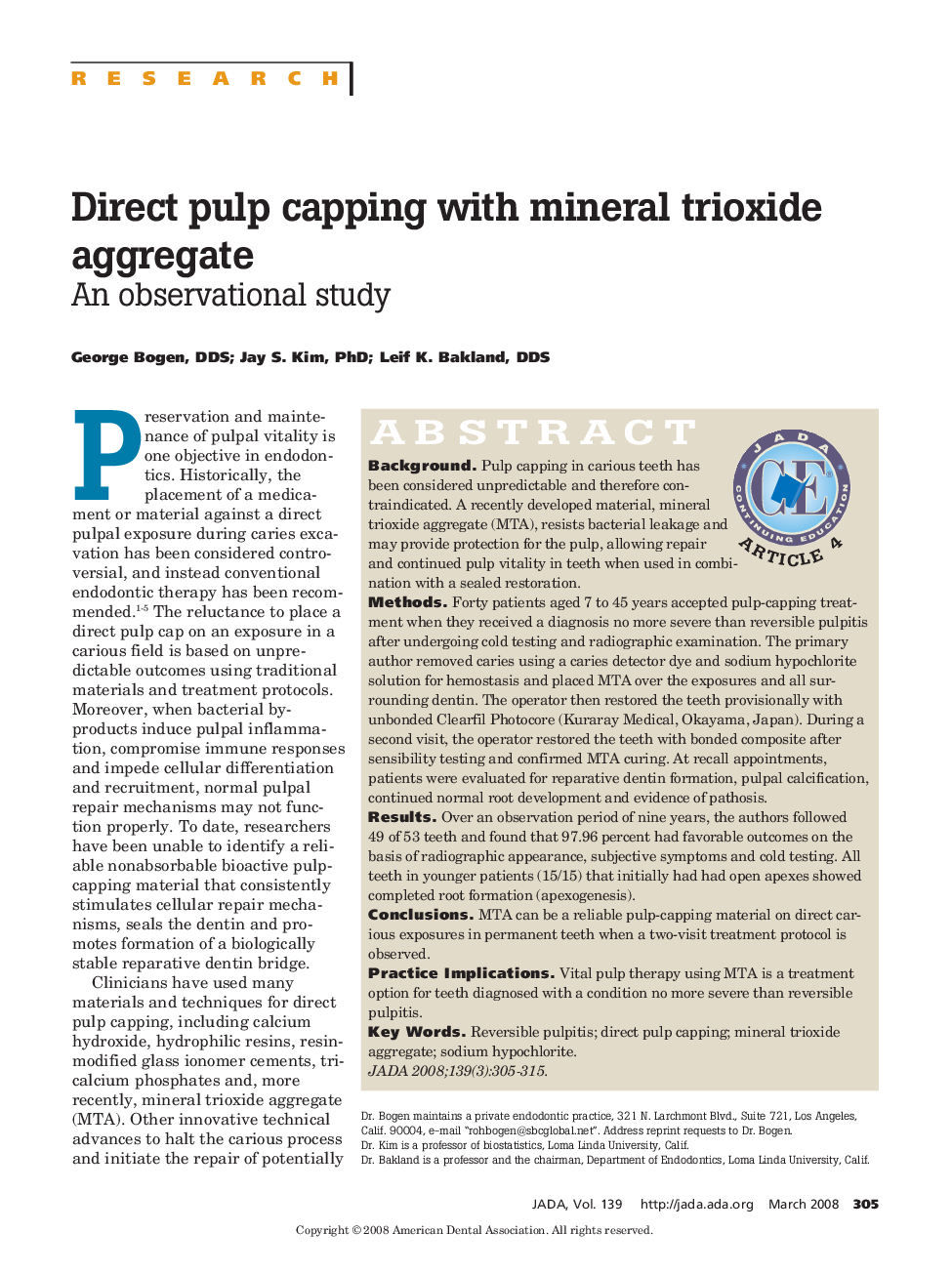| Article ID | Journal | Published Year | Pages | File Type |
|---|---|---|---|---|
| 3139490 | The Journal of the American Dental Association | 2008 | 11 Pages |
ABSTRACT BackgroundPulp capping in carious teeth has been considered unpredictable and therefore contraindicated. A recently developed material, mineral trioxide aggregate (MTA), resists bacterial leakage and may provide protection for the pulp, allowing repair and continued pulp vitality in teeth when used in combination with a sealed restoration.MethodsForty patients aged 7 to 45 years accepted pulp-capping treatment when they received a diagnosis no more severe than reversible pulpitis after undergoing cold testing and radiographic examination. The primary author removed caries using a caries detector dye and sodium hypochlorite solution for hemostasis and placed MTA over the exposures and all surrounding dentin. The operator then restored the teeth provisionally with unbonded Clearfil Photocore (Kuraray Medical, Okayama, Japan). During a second visit, the operator restored the teeth with bonded composite after sensibility testing and confirmed MTA curing. At recall appointments, patients were evaluated for reparative dentin formation, pulpal calcification, continued normal root development and evidence of pathosis.ResultsOver an observation period of nine years, the authors followed 49 of 53 teeth and found that 97.96 percent had favorable outcomes on the basis of radiographic appearance, subjective symptoms and cold testing. All teeth in younger patients (15/15) that initially had had open apexes showed completed root formation (apexogenesis).ConclusionsMTA can be a reliable pulp-capping material on direct carious exposures in permanent teeth when a two-visit treatment protocol is observed.Practice ImplicationsVital pulp therapy using MTA is a treatment option for teeth diagnosed with a condition no more severe than reversible pulpitis.
